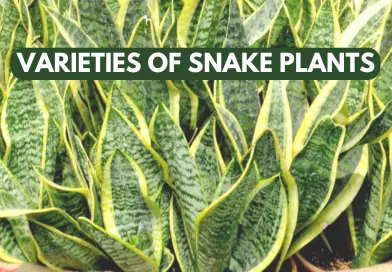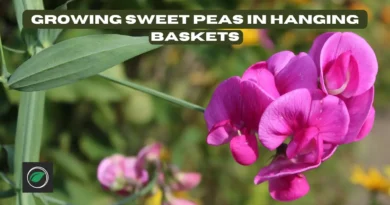سنیک پلانٹ Varieties of Snake Plants in Pakistan (2024)
Introduction:
Snake plants are scientifically known as Sansevieria are native to tropical regions of Africa and Asia. Snake plants are popular indoor plants in Pakistan. Snake plants can filter and remove pollutants from indoor air. Snake plants have various shapes and colors. Snake plants require little maintenance. In this article, you will know about different varieties of snake plants in Pakistan, their appearance, and care suggestions.
Table of Contents
Benefits of Snake Plants Indoor:
Snake plants have other benefits in addition to their attractive appearance. The main advantage is that these plants can clean the air. Snake plants have the quality to absorb toxins which improves the quality of the air. The snake plants release oxygen at night which promotes quality of sleep.
Other advantage is that they are hardy plants and a person who is a beginner can easily grow them. These plants can survive in low-light light conditions. Snake plants are typically regarded as harmless for cats and dogs. While it is always recommended to keep any plant away from pets.
Varieties of Snake Plants in Pakistan:
Sansevieria trifasciata:
Commonly known as mother-in-law tongue. This is most popular among other varieties. The snake plant has large, green tongue-like leaves that rise straight from the soil. Leave are thick and strong. This variety thrives in indirect sunlight and requires minimum watering.
Golden Snake Plant (Laurentii):
Laurentii is a popular variety of the snake plant family. The leaves are bright green, with golden-yellow edges. The golden snake plants grow successfully in bright, indirect light and well-draining soil. Cleaning leaves helps maintain their bright beauty.
Snake plant Cylindrica:
Cylindrical snake plants are also known as spear plants. Its leaves are long and skinny, kind of like tubes or spears. The leaves have a glossy texture that enhances their overall appearance. The leaf color can be green to bluish-green or gray-green. Cylindrical snake plants can survive in low light conditions and require little watering.
Bird Nest Snake Plant (Hahnii):
Hahnii snake plant which is known as bird’s nest snake plant. This grows in a thick rosette of leaves near the soil. The leaves of the bird nest snake plant are thick and have various shades of green. This is a good option to place in small spaces or as a tabletop or windowsill decoration. It needs little watering and can grow in low light.
Moonshine Snake Plant:
The Moonshine snake plant is a unique variety of snake plant family. The silver-gray leaves give it an attractive look. The leaves grow in a rosette pattern from a central base. The leaves are thick and have pointed tips. The moonshine variety is also hardy and can survive in low light. For the best results place them in bright but indirect sunlight.
Golden Bird’s Nest Snake Plant (Golden Hahnii):
Golden Hahnii is a very appealing snake plant variety. It is valued for its small size, beautiful leaf, and brilliant color. The golden hahnii forms a dense cluster of leaves that grow close to the soil in a rounded shape. Golden Hahnii leaves are thick and have a bright golden-yellow color.
Caring for Snake Plants:
The snake plants do not require much care but for maintaining the color and beautiful appearance of the snake plant it is important to fulfill the basic requirements. The snake plants grow successfully in bright but indirect sunlight.
For good health and to prevent root rot only water when the soil is completely dry. Use Well-draining soil and make sure the pots have enough drainage holes. Clean the leaves once or twice a week this maintains the process of photosynthesis effectively.
Common Issues:
The most common issue of snake plants is root rot which is caused by overwatering. The other issues can be pests and diseases. If the soil is wet or has enough moisture then don’t water the plants and mostly overwatering is the main cause of pest attacks on plants. You can mix a few drops of neem oil in water and spray to control pests.
Buying Guide:
If you are going to buy snake plants, then keep a few things in mind. Always look for healthy plants with fresh and upright leaves. Avoid buying plants with yellow or withered leaves because it can be a sign of underlying issues. Consider the size and shape of the plant aaccording to your space, and always buy plants from reputable sources.
Conclusion:
Snake plants are very hardy plants that enhance the beauty of indoor areas. There are many different varieties of snake plants in Pakistan from classic Sansevieria trifasciata (mother-in-law tongue) to unique Sansevieria cylindrica. Snake plants do not require much attention and air-purifying qualities make them the favorite option to grow indoors.
FAQs
Are snake plants suitable for indoor or outdoor?
Snake plants can grow successfully indoors and outdoors. In Pakistan’s climate, snake plants can tolerate both the warm temperatures of outdoor and indoor conditions, including low light and dry air.
How frequently should I water my snake plant?
Water the snake plants when the upper surface of soil is completely dry. Do not water if the soil is already wet or has moisture. Watering less is better than overwatering.
Can snake plants survive in low light?
Yes, snake plants are hardy plants and can survive in low light, but for better results, these plants like to grow in bright, indirect light.
Are snake plants safe around pets?
Yes, snake plants are normally safe for pets. On the other hand, consumption in large quantity can induce minor gastrointestinal discomfort in cats and dogs. It is best to keep snake plants away from pets.
Do snake plants require regular fertilization?
Snake plants are low-maintenance and typically do not require regular fertilization. But if you want to use fertilizer use balanced houseplant fertilizer during the growing season.




